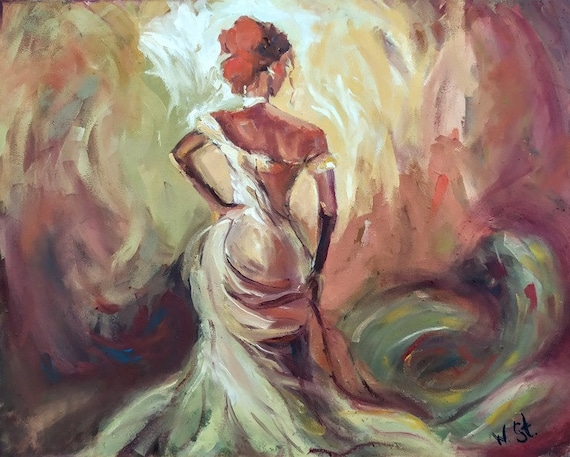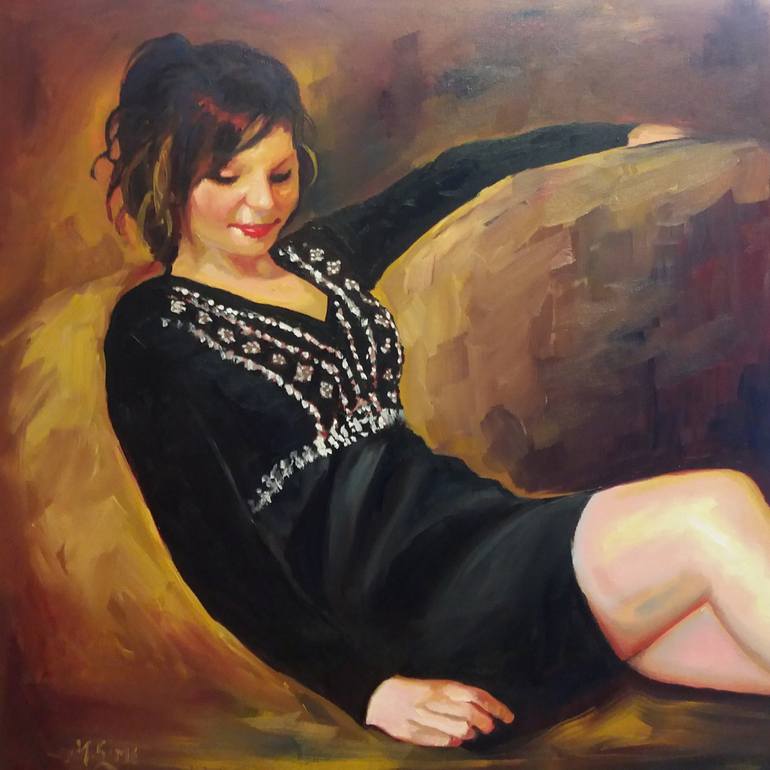Revealing the Keys Behind Meaningful Figurative Oil Painting Styles
Revealing the Keys Behind Meaningful Figurative Oil Painting Styles
Blog Article
The Development of Figurative Oil Paint: Recognizing Its Historic Value and Modern Interpretations
The development of figurative oil painting offers as a compelling lens via which to take a look at the interaction between imaginative expression and historical context. Contemporary musicians, attracting from this rich heritage, are currently reinterpreting the human number in ways that test standard stories.
Origins of Figurative Oil Paint
The origins of figurative oil paint can be traced back to the early Renaissance in Europe, especially in the 15th century. This period noted a significant departure from the level representations and stiff types particular of middle ages art. Musicians began to explore naturalism, highlighting the human number and its emotional expression. The development of oil paint enabled for better deepness of color and information, enhancing the realism and vibrancy of their work.

In this transformative period, numbers were typically portrayed within contextually rich environments, showcasing not just their physical features however likewise their psychological states. Leaders such as Jan van Eyck and Titian used the tool's flexibility, employing layering strategies to achieve luminosity and appearance. This technology assisted in the portrayal of intricate textiles and the subtleties of complexion, adding to the growth of portraiture and narrative scenes.
In Addition, the Renaissance emphasis on humanism fostered an admiration for distinctiveness, which in turn affected artists to develop more relatable and dynamic numbers - figurative oil painting. Therefore, figurative oil paint emerged as an effective car for narration and emotional involvement, preparing for future imaginative movements and styles
Trick Historical Motions
Significant historical activities have formed the evolution of figurative oil paint, each contributing distinct viewpoints and strategies that broadened the tool's possibilities. The Renaissance marked a turning point, highlighting realism and the human form, with artists like Leonardo da Vinci and Michelangelo pushing the borders of physiological accuracy and point of view. Following this, the Baroque period brought dramatic contrasts of light and shadow, exhibited by Caravaggio, that infused spiritual themes with intense emotionality.
The 19th century presented Romanticism and Realistic look, where musicians such as Delacroix and Courbet challenged classic perfects, concentrating on individual expression and daily life. The arrival of Impressionism further revolutionized the medium by highlighting the results of light and shade, resulting in a departure from standard depiction.
In the very early 20th century, movements like Expressionism and Cubism redefined figurative paint with abstraction and the expedition of psychological deepness. Each of these activities not just reflected the societal changes of their times but likewise laid the foundation for contemporary analyses. The interaction in between these historical movements has created a rich tapestry of ideologies and designs, affecting modern-day musicians in their quest of catching the human experience on canvas.
Methods and Materials Development

Throughout the Baroque period, strategies such as chiaroscuro and sfumato emerged, boosting the emotional vibration of figurative structures. Musicians started to experiment with lusters and impasto, manipulating structure and luminosity. By the 19th century, technologies like the use of pre-mixed paints in tubes changed ease of important site access, permitting artists to repaint en plein air and record the fleeting results of light.
The 20th century witnessed the intro of artificial pigments and mediums, which broadened the scheme and altered the uniformity of oil paints. Moreover, the exploration of brand-new application strategies, such as palette blades and brushes of differing stiffness, additional varied imaginative expression. Jointly, these advancements show the advancing relationship between materials, methods, and the creative vision integral in figurative oil painting.

Contemporary Analyses
Contemporary analyses of metaphorical oil paint mirror a vibrant discussion between custom and development, where artists challenge developed standards and discover varied styles. This development materializes in various ways, as contemporary musicians mix classic methods with modern concepts, often addressing social, political, and individual stories.
Lots of professionals draw inspiration from historic jobs, yet they infuse their pieces with modern point of views, utilizing the human form as a lorry for discourse on identification, culture, and sex. Artists progressively try you can try this out out abstraction, distortion, and mixed media, which enables a wider interpretation of the number and its context.
Furthermore, using dazzling color schemes and unique compositions often offers to disrupt typical seeing experiences, prompting important engagement from audiences. This change in focus expands past appearances; it reflects an expanding awareness of the intricacies of human experience in an interconnected world.
As figurative oil paint remains to advance, it remains a crucial medium for checking out the subtleties of modern life, embodying both a regard for heritage and a commitment to dynamic thought. The result is an abundant tapestry of expression that reverberates with the complexities of the modern-day human problem.
Influence On Modern Art
The effect of figurative oil painting on modern art is extensive, as it has actually consistently influenced a myriad of imaginative movements and practices throughout the 21st and 20th centuries. From look these up Expressionism to Surrealism and beyond, the exploration of the human number has actually stayed a main motif, permitting musicians to share complex emotions and narratives. This emphasis on figurative representation has resulted in a re-examination of conventional methods, leading to ingenious strategies that blend realism with abstraction.
Moreover, contemporary musicians have actually welcomed metaphorical oil paint as a way to attend to political and social concerns, making use of the tool to challenge understandings of culture, identity, and gender. The rebirth of passion in metaphorical operate in recent years reflects a longing for link in a significantly electronic world, where human experience and emotion are extremely important.
In addition, the discussion between metaphorical oil paint and contemporary art appears in the works of artists such as Kehinde Wiley and Jenny Saville, that make use of historical referrals while instilling their pieces with modern significance. Ultimately, metaphorical oil painting continues to form and redefine contemporary artistic expression, highlighting its enduring significance in the art globe.
Final Thought
The evolution of metaphorical oil painting emphasizes its historical significance and flexibility across numerous creative activities. From the naturalism of the Renaissance to the emotive expressions of the Baroque and the innovative techniques of modernity, this tool has consistently transformed. Contemporary analyses show unusual compositions and lively shades, promoting critical interaction with social and political motifs. Ultimately, metaphorical oil painting stays an essential medium for checking out the human experience, reverberating profoundly in today's electronic landscape.
The advancement of figurative oil painting serves as a compelling lens with which to take a look at the interaction between artistic expression and historical context.Considerable historic activities have actually formed the evolution of figurative oil painting, each contributing distinct approaches and strategies that increased the tool's possibilities.As historical motions shaped the trajectory of figurative oil painting, the methods and products utilized by musicians have actually likewise gone through considerable makeovers. figurative oil painting.The influence of metaphorical oil paint on modern art is profound, as it has actually continually influenced a myriad of imaginative movements and methods throughout the 21st and 20th centuries.The evolution of figurative oil painting highlights its historical significance and flexibility throughout numerous creative motions
Report this page